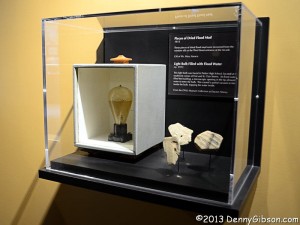 At right is a very old light bulb with some very old water inside. The bulb was in a Dayton, Ohio, high school during the 1913 flood and a microscopic hole allowed water to get inside. The worst natural disaster in Ohio’s history struck on March 25, 1913. On March 23, 2013, a permanent display, devoted to the flood, opened at Carillon Historical Park. I saw the exhibit for the first time yesterday.
At right is a very old light bulb with some very old water inside. The bulb was in a Dayton, Ohio, high school during the 1913 flood and a microscopic hole allowed water to get inside. The worst natural disaster in Ohio’s history struck on March 25, 1913. On March 23, 2013, a permanent display, devoted to the flood, opened at Carillon Historical Park. I saw the exhibit for the first time yesterday.
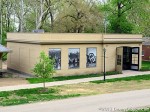
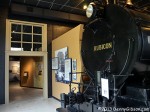 An existing building was greatly enlarged to house the display though it’s almost impossible to tell the new from the old. The original building was nearly filled by the Rubicon fireless steam engine. The NCR (National Cash Register) owned engine had been a big help in the flood recovery so adding the display to its home seems appropriate.
An existing building was greatly enlarged to house the display though it’s almost impossible to tell the new from the old. The original building was nearly filled by the Rubicon fireless steam engine. The NCR (National Cash Register) owned engine had been a big help in the flood recovery so adding the display to its home seems appropriate.
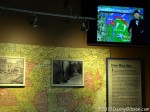
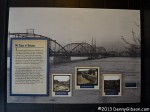 The 1913 flood wasn’t the first for Dayton. The city stands at the convergence of three rivers and a creek so flowing water is ever present. Some actual photographs of the 1866 flood are on display with a larger image of from the 1898 flood as background. There were also major floods in 1828 and 1847. The TV screen with modern style reporting of 1913 weather may look a little corny but it is an effective way of describing the wind, rain, and temperatures that gave rise to the flood.
The 1913 flood wasn’t the first for Dayton. The city stands at the convergence of three rivers and a creek so flowing water is ever present. Some actual photographs of the 1866 flood are on display with a larger image of from the 1898 flood as background. There were also major floods in 1828 and 1847. The TV screen with modern style reporting of 1913 weather may look a little corny but it is an effective way of describing the wind, rain, and temperatures that gave rise to the flood.
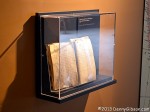
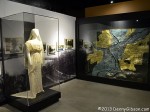 Many personal stories and artifacts help make up the exhibit. Katherine Kennedy Brown’s diary, with a large “The Flood” headlining the record of her experiences, is one. Another is the dress Grace Hall had made for her wedding. Trapped by the flood, Grace was rescued by her fiance but the dress was left behind. Read the placard here. The three-dimensional map beyond the dress was made by NCR in 1914 to show the extent of the flood. About fourteen square miles of the city were under water at the flood’s peak.
Many personal stories and artifacts help make up the exhibit. Katherine Kennedy Brown’s diary, with a large “The Flood” headlining the record of her experiences, is one. Another is the dress Grace Hall had made for her wedding. Trapped by the flood, Grace was rescued by her fiance but the dress was left behind. Read the placard here. The three-dimensional map beyond the dress was made by NCR in 1914 to show the extent of the flood. About fourteen square miles of the city were under water at the flood’s peak.
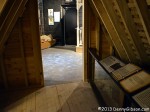 Attics often figure prominently in floods and they certainly did in this one. “Remember the promises you made in the attic” became something of a rallying cry after the flood. A recreated attic is part of the exhibit but I didn’t expect much when I stepped into it. The moving light patterns on the solid floor looked about as corny as the derby-wearing weatherman. Maybe so but it is also just as effective. As I stood in the small space listening to the sounds of water coming from the dark hole that led the lower parts of the house and the creaking of the structure as water pressed against it, that concrete floor became a lot less solid and I had just a tiny sense of what it was like fearing that one of those creaks would change to a crack.
Attics often figure prominently in floods and they certainly did in this one. “Remember the promises you made in the attic” became something of a rallying cry after the flood. A recreated attic is part of the exhibit but I didn’t expect much when I stepped into it. The moving light patterns on the solid floor looked about as corny as the derby-wearing weatherman. Maybe so but it is also just as effective. As I stood in the small space listening to the sounds of water coming from the dark hole that led the lower parts of the house and the creaking of the structure as water pressed against it, that concrete floor became a lot less solid and I had just a tiny sense of what it was like fearing that one of those creaks would change to a crack.
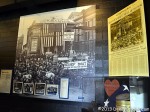 The exhibit loops back to the Rubicon where the story of the birth of the Miami Conservancy District is presented. Many also consider this the birth of modern flood control. Under reminders of those “promises made in the attic”, Daytonians organized and financed a project that has succeeded in keeping Dayton dry to this day. It’s impossible to say just what this hotbed of invention would have become without the flood but it’s fairly easy to guess what it would have become without the MCD.
The exhibit loops back to the Rubicon where the story of the birth of the Miami Conservancy District is presented. Many also consider this the birth of modern flood control. Under reminders of those “promises made in the attic”, Daytonians organized and financed a project that has succeeded in keeping Dayton dry to this day. It’s impossible to say just what this hotbed of invention would have become without the flood but it’s fairly easy to guess what it would have become without the MCD.

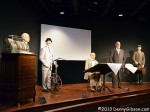
 Although the carousel and 4-D theater were here when I visited last year, I didn’t actually see them. The carousel is filled with Dayton icons such as the Wright brothers’ dog and a Huffy bicycle. The animatrons in the theater tell of Dayton history with the help of some seat shaking, wind blowing, and a few dashes of water. The Wright brothers are there along with John Patterson, Charles Kettering, and Colonel Deeds. One of the reasons I’ll be coming back next year is shown in the third picture. Work has just begun on the Carillon Brewing Company which should open by the end of 2013. The brewery will produce and sell beer using historic tools and methods.
Although the carousel and 4-D theater were here when I visited last year, I didn’t actually see them. The carousel is filled with Dayton icons such as the Wright brothers’ dog and a Huffy bicycle. The animatrons in the theater tell of Dayton history with the help of some seat shaking, wind blowing, and a few dashes of water. The Wright brothers are there along with John Patterson, Charles Kettering, and Colonel Deeds. One of the reasons I’ll be coming back next year is shown in the third picture. Work has just begun on the Carillon Brewing Company which should open by the end of 2013. The brewery will produce and sell beer using historic tools and methods.
The flood was also the subject of an earlier blog entry, a guest post from HistoricNaturalDisasters.com.
